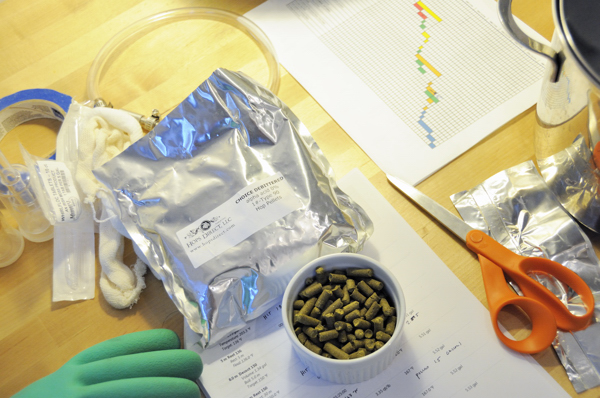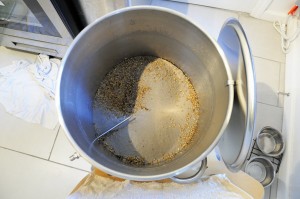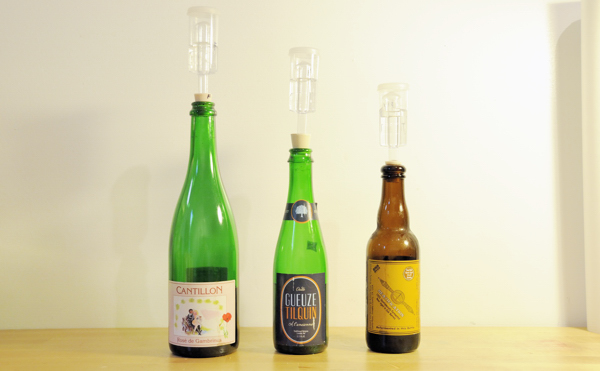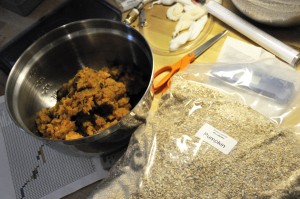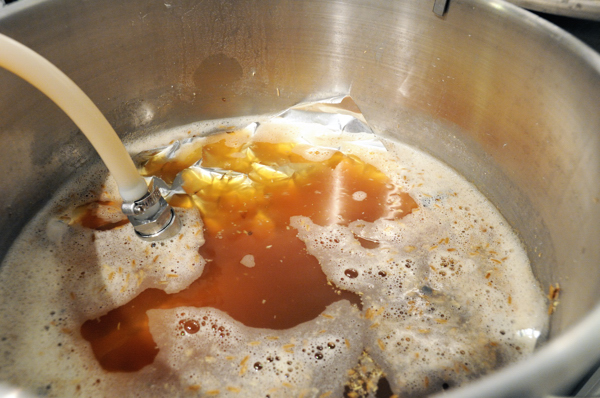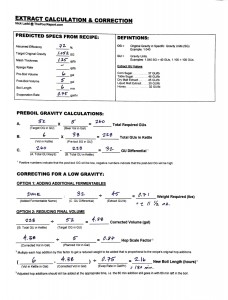
My brewsheet allows for easy adjustment of gravities. It is a simple matter of taking inventory of how much sugar is in the kettle pre-boil, and then adjusting your process or recipe on the fly, to hit your targets.
One of the most basic and important measures we take when brewing beer is specific gravity — the concentration of sugar within a wort. Original gravity is taken before fermentation begins, and when combined with additional readings during and after fermentation tells us volumes about what is occurring with your beer.
- The alcohol content of your beer. This can be calculated by formula if we know what the starting and finishing gravities are.
- The balance of your beer. Looking at the ratio of gravity to bitterness can tell a brewer a lot about how balanced a beer will be.
- The fermentation status of your beer. By analyzing a recipe and process, you can estimate what your expected attenuation level is. If you know what gravity you started at, you can predict approximately where the beer will finish.
With this said, being able to predict your starting gravity and making adjustments on the fly that allow you to hit it, is key to accurately producing a recipe as well as reproducing beers you’ve made in the past.
The good news is that hitting your target gravity is easy. When brewing beer, the amount of sugar in the kettle is constant. As you boil, water evaporates and the concentration of sugar in the wort goes up. There is absolutely no difference in the amount of sugar in the kettle from the beginning of the boil until the end. Since we’re only changing one variable over the course of a boil (the amount of water), some very simple algebra (don’t worry, it is really simple) can be used to help us predict our final post-boil gravity, and make adjustments on the fly in order to hit our target gravity.
The first step in hitting your target gravity is to quantify the amount of sugar in your kettle pre-boil and check it against the amount of sugar that should be in the kettle in order to hit your target gravity. This quick check allows you to know exactly where you stand and whether to expect your starting gravity to be low or high. If you expect your gravity to be low you can add more sugar or boil longer to reduce your final volume. If you expect your gravity to be high, you can remove a portion of wort from the kettle and replace it with water or simply increase your final volume.
These are all fairly rudimentary algebra exercises. In order to simply it for my brewdays, I’ve created a fill-in-the-blank brewsheet that makes the math a very simple exercise. Additionally, the brew sheet helps me keep track of all my brewday statistics and calculate extract efficiency.
You can download your own copy, here. Let me know what you think!



